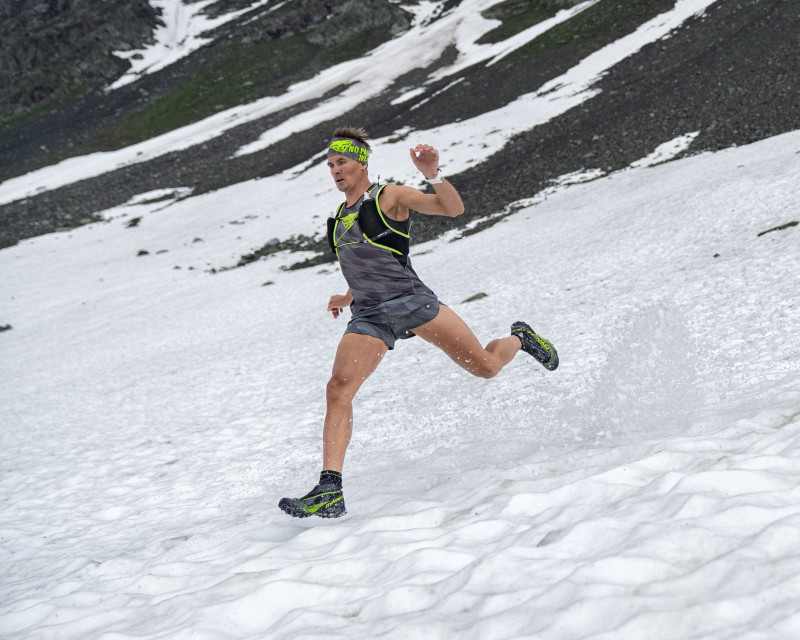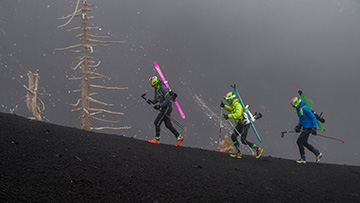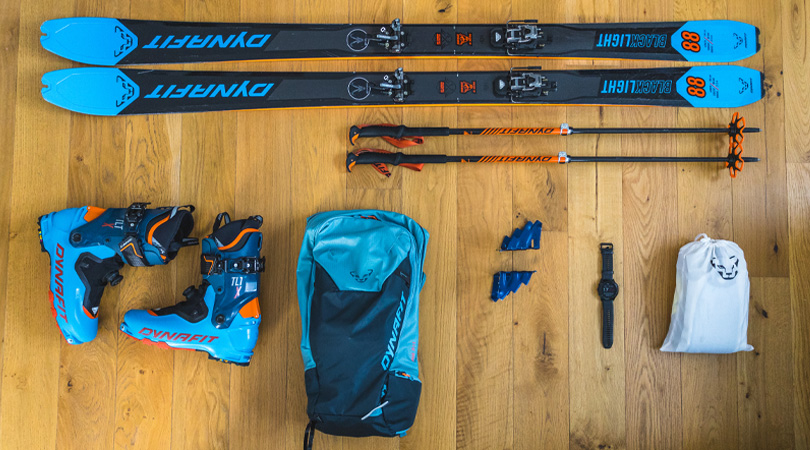Ultramarathon challenge: Here’s how to properly train
Ultra-running isn’t for everyone, but many runners out there do dream of such a thing. Particularly in trail running, distances above and beyond the 42k marathon distance are quite popular. Off-road terrain offers significantly more variety than traditional road running, which helps make longer distance running more enjoyable. But what does training for such a race look like? How do you train in general for trail running and what are the specifics and differences in preparing for an ultra? Our DYNAFIT athlete manager and sports scientist Lukas Naegele clues you in on how to properly train:
The basics: Aerobic and anaerobic training
Before we dig deeper into the subject matter of training plans, it’s important to know and to understand the fundamentals of how the human body actually works. What do we really want to achieve when we “train?”
In the end, it’s really all about promoting a certain performance, i.e. to make our bodies more high-powered. If you paid attention in school to your physiology lessons, you may already remember some of this. Power (or performance) refers basically to the conversion of energy over a certain period of time. In short: Power = Energy / Time
In other words, we need energy to achieve a corresponding performance, which is precisely what we work on when we train - energy supply. There are two primary sources for energy production: carbohydrates and fats, and there are two ways for us to gain energy from these sources, the anerobic system and the aerobic system.
Anaerobic means that we do not need oxygen to find energy using this method. On the other hand, we need oxygen to source energy via the aerobic system. It is however important to note that both systems are always working in tandem. In other words, We are always sourcing energy from both energy systems, as neither the anaerobic or the aerobic system work alone.
Let’s take a closer look at the process of energy production. While our carbohydrate stores are very limited, fats are available at nearly unlimited amounts. The problem, the body always resorts to using valuable carbohydrates first, which are very quickly metabolized without the need for oxygen (i.e. anerobic). Accordingly, we gain quick energy. Actually, a pretty amazing thing, but once the stores are empty, there is no more gas in the tank so to speak. Therefore, we need to teach the body to use this form of energy as sparingly as possible, particularly during longer activity. This process of carbohydrate metabolism creates lactate, which is the substance that is always depicted as damaging and bad. But is it really so? I can reassure you, that it is not at all. Lactate per se is always full of energy, energy of which we can use. However, for that we now need oxygen. If there is enough available, then the accumulated lactate is further metabolized one-to-one directly via aerobic pathways.
And what about fats? If the body has enough oxygen available, (in other words during very low-intensity physical stress) it turns increasingly to fat. With that, it has an energy source that it can take advantage of for several hours. The decisive difference between it and carbohydrates is however that fats are only aerobic – meaning they must have oxygen to be metabolized.
What does “properly train” mean?
Training means improving how both systems delivery energy. The foundation of every training plan for endurance sports is always improving energy supply. Specifically, that means:
1. We have to start training the body to use its limited carbohydrate stores more efficiently (anaerobic system).
2. We have to enable the body to transport more oxygen throughout, in order to gain energy from lactate and fats (aerobic system).
Training tips to improve anaerobic metabolism
In order for the body to learn to use valuable carbohydrates more efficiently, low-carbohydrate workouts like the ones listed below are great ideas:
• Run at a lower intensity so you always have enough oxygen available. If you can still hold a conversation easily while running, then you are spot-on.
• Long, easy runs are of course better than short, fast runs.
• Especially at the beginning, you should not do a low-carbohydrate run longer than 1.5 to 2 hours. What is essential is to always have an emergency energy bar or gel handy.
In this way, the body learns to economize with fewer carbohydrates that are available to it and to increase its production of energy using fats.
My tip: Caffeine is a trigger for energy production using fats. So, go ahead and down an espresso before such a run.
Training tips to improve aerobic metabolism
The goal here is to increase oxygen flow in the body. That means we must produce a high flow of oxygen in training to effect adaptations in the body. We always produce a high flow of oxygen with intense training, such as intervals, where we alternate stress and recovery phases.
• These workouts should always take place when your carbohydrate stores are topped off.
• Interval length between 1-10 minutes
My suggestion: hill intervals - e.g. 10 x 1 minute uphill alternating with 2 minutes easy jog.
Specifics: Training for trail and ultrarunning
As previously mentioned, training for every type of endurance sport is always based on improving energy supply, which means that training for a flat marathon, a 100k road run, or a mountain run is not significantly different.
In addition to energy supply, the length of the race and muscular fatigue are factors you must keep in mind when it comes to running long distances. In fact, it makes a difference if the body is subject to the same stress for 3 to 5 hours, or, as with an ultra in the mountains, for 15 to 25 hours. In other words, you must train muscles and the entire musculoskeletal system for the physical stress it will endure during an ultra. The largest difference between ultras on trails vs. races on flat terrain is the climb on the hills. Contrary to common assumptions, it is not really the uphill climbs that do damage and are painful in the end but the downhill passages. Thus, you must train in a very targeted manner.
Running ABC drills and stabilization exercises
Running ABC drills is a technique training for runners that is also called “running school.” Technique training is essential for every runner – and even more so for trail runners. Running ABC drills will help you to run lighter on your feet, faster and injury-free, and should be integrated into training twice a week. Many athletes do not like these drills, but it’s worth it and all you need is 10 minutes. But you must do them regularly.
It’s appropriate to integrate running ABC drills after a warm-up and prior to more intense intervals. Some ABC drills are, high-knees, butt-kickers, skipping, or lateral runs. These exercises train running gaits, and can not only help prevent injuries but can also make running more efficient! They teach the body to use its structural parts that we have for forward motion without demanding energy from tendons and ligaments.
In order to better withstand the stresses of trail running, particularly downhill running, then stabilization training and strength training are also a must.
In the winter, I like to recommend integrating these exercises into a training plan when long run aren’t as easy to come by. Working on your core and training your leg muscles with squats and lunges are also a great way to incorporate strength training into your workout routine. As your race gets closer, it is important to incorporate hilly terrain into your long run and get in as much climbing and vertical as possible. By doing so, you are training your muscles to run efficiently with the appropriate stride length and a pronounced knee lift.
Conclusion: Training for trail and ultrarunning
Proper preparation and training for trail running should consist of different components:
1.Structured training for improving energy supply:
// low-carbohydrate workouts at a lower intensity over a long distance to optimize anerobic metabolism
// intense intervals with fully topped-off carbohydrate stores to improve aerobic metabolism
2. Running ABC drills twice weekly to improve running economy
3. Stabilization and strength training as base training in the winter
4. Putting in plenty of climbing and vertical to help the body get accustomed to the mechanical stress and to become more efficient on the mountain



















